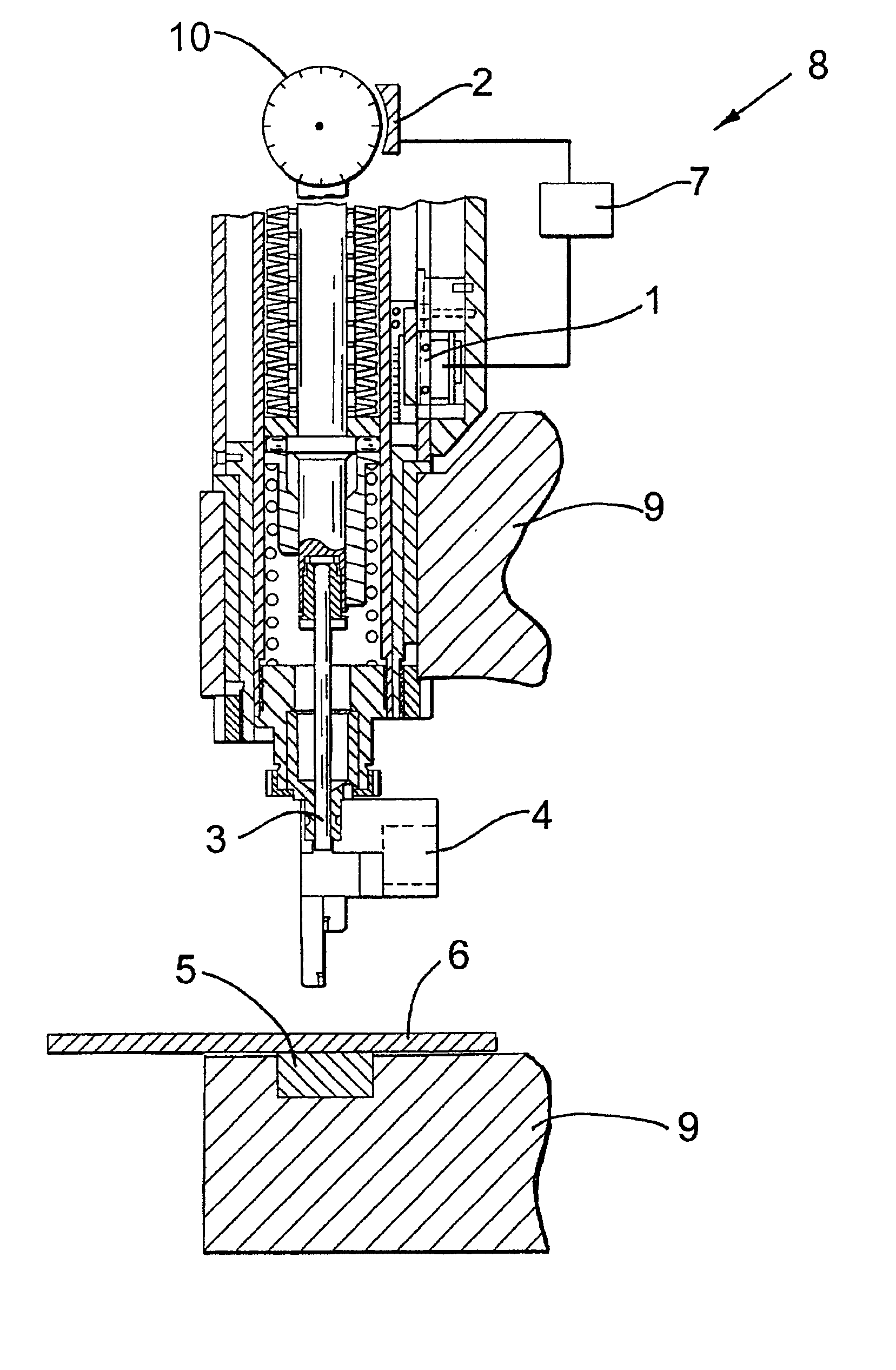Method for riveting or piercing and a device for carrying out the method
a self-piercing and riveting technology, applied in the field of riveting or self-piercing, can solve the problems of constant movement of the device, need of cable ducts, and subject to wear phenomena, and achieve the effect of simple method, long riveting length and simple calibration
- Summary
- Abstract
- Description
- Claims
- Application Information
AI Technical Summary
Benefits of technology
Problems solved by technology
Method used
Image
Examples
Embodiment Construction
FIG. 1 shows a riveting device 8, but a self-piercing machine (not shown) could have been illustrated to show the present invention. The riveting device 8 has a counterforce structure 9 surrounding a workpiece 6 in the form of a C-shaped bracket of which only the outer portions are shown. The workpiece 6 is supported on a die plate 5. A pick-up device 4 picks up rivets, which are driven into the workpiece 6 with the aid of a die 3 driven by a drive unit 10. A first sensor 1 measures the relative movement between pick-up device 4 and counterforce structure 9. This sensor is preferably a linear path recorder consisting of a kind of ruler which makes the same movement as the pick-up device 4 and a counter which is fixed to the counterforce structure 9 and counts markings on the ruler going past it. A second sensor 2 measures the relative movement between counterforce structure 9 and die 3. Sensors of this kind are known per se and usually integrated into the drive unit 10 of the die 3....
PUM
 Login to View More
Login to View More Abstract
Description
Claims
Application Information
 Login to View More
Login to View More - R&D
- Intellectual Property
- Life Sciences
- Materials
- Tech Scout
- Unparalleled Data Quality
- Higher Quality Content
- 60% Fewer Hallucinations
Browse by: Latest US Patents, China's latest patents, Technical Efficacy Thesaurus, Application Domain, Technology Topic, Popular Technical Reports.
© 2025 PatSnap. All rights reserved.Legal|Privacy policy|Modern Slavery Act Transparency Statement|Sitemap|About US| Contact US: help@patsnap.com


